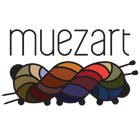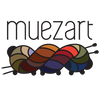Introduction To Embroidery
Embroidery is an ancient needlework technique that is believed to have originated in China. And like some artforms it could have evolved from unintended purposes like maybe stitching to join fabric or patchwork. It is not exactly known when embroidery was used primarily for art and decoration, but its influence moved across the Middle East then Europe.
The purpose of embroidering fabric like aprons, pillow & cushion covers, T-shirts, caps, blankets, shirts, denim, or even dresses is basically stitching a pattern using a needle and thread. Some embroidery styles include running the thread through beads, sequins, mirrors, or semi-precious stones.
Styles and stitches have evolved over the years and each region across the globe has some sort of uniqueness that depended on the materials used and occasion. Although an art form is predominantly done by hand, with the emergence of technology we have seen automated computerized embroidery machines produce fine and detailed results.
A few famous hand embroidery styles in India
- Chikankari
- Kantha
- Phulkari
- Zardozi
- Rajasthani patchwork
- Kashidakari
- Aari
- Shisheh (Mirror work)
Basic Embroidery Stitches
Here is a list of some of the different types of basic embroidery stitches.
- Backstitch
- Running stitch
- Elongated stitch
- Straight stitch
- French knot
- Stem stitch
- Chain stitch
- Feather stitch
- Split stitch
- Fly stitch
- Woven wheel stitch
How to select embroidery threads
There are different embroidery threads types, which is why it's important to know what thread to use for your project as it affects the result of the design. Threads also called floss can be got in a wide range of fibers, colors, types, and weights. It is also very important to choose threads depending on the type of fabric, the fabric thread count, and the style of embroidery being done.
Any beginner should experiment a lot to understand whether the thread or fabric or needle size will give the desired result. Embroidery threads are available in wool, linen, silk, cotton, rayon, and novelty yarns. The ribbon is also used to create floral motifs in embroidery.
Read about the Different Uses of Embroidery Threads
About Muezart Embroidery Threads
Our natural hand-dyed embroidery thread is tightly twisted, has a beautiful texture, and behaves like Perle cotton. It is a 2-ply thread that results in giving your project a textured effect.
Our unique Eri silk embroidery threads are hand-dyed using plant-based ingredients.
These beautiful embroidery threads are S-twisted and work great on a rustic middleweight fabric or light, thin fabric.
Using our 2 ply embroidery thread, you can create a lovely, uniform finish for your designs. These threads are suitable for cross stitch, crewel embroidery, freestyle embroidery, needlepoint, etc.
Benefits of Embroidery
- Alleviate Stress
- Reduced anxiety
- Lower blood pressure
- Keeps brain healthy
- Sense of mindfulness
- Build confidence









